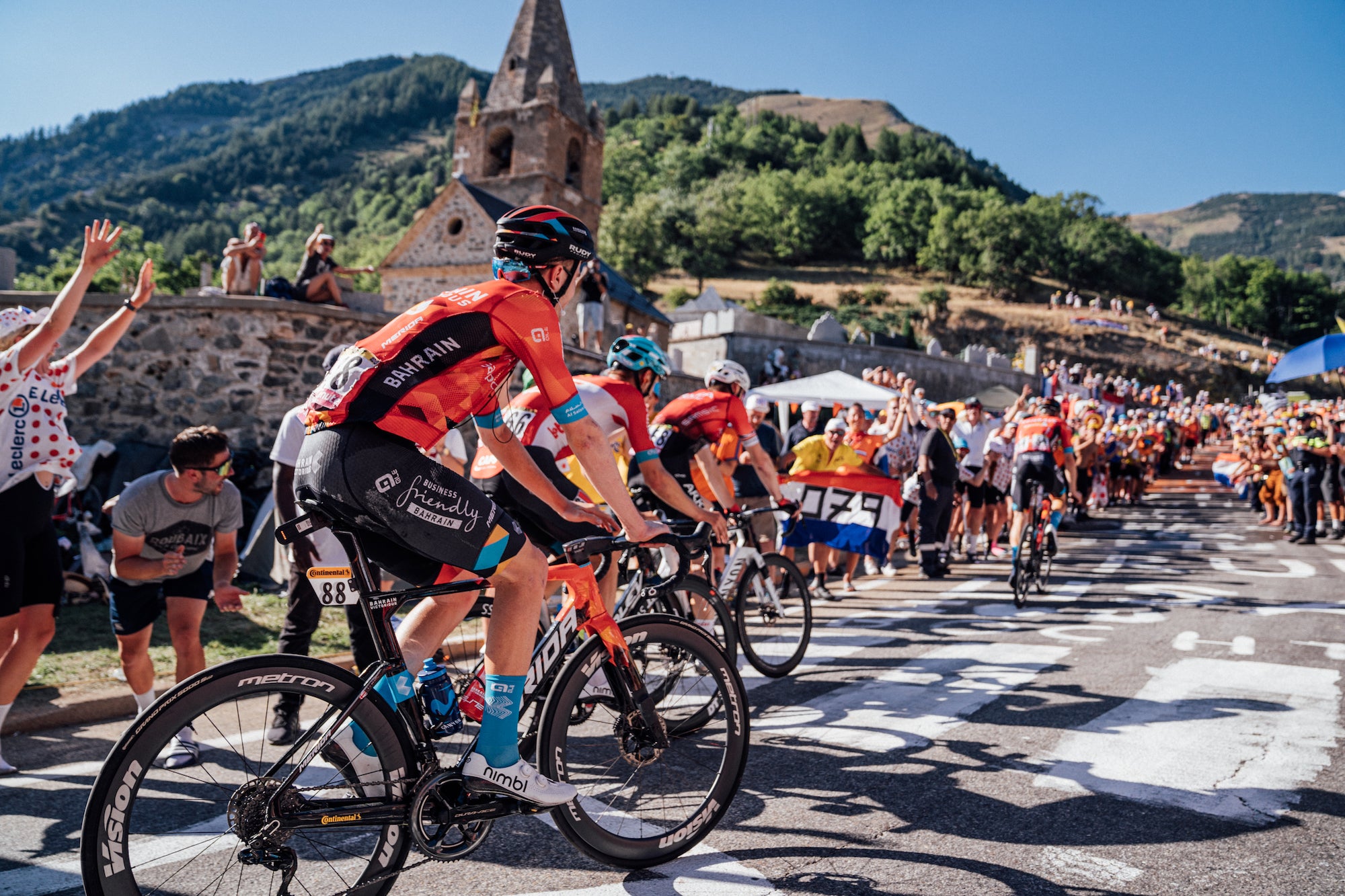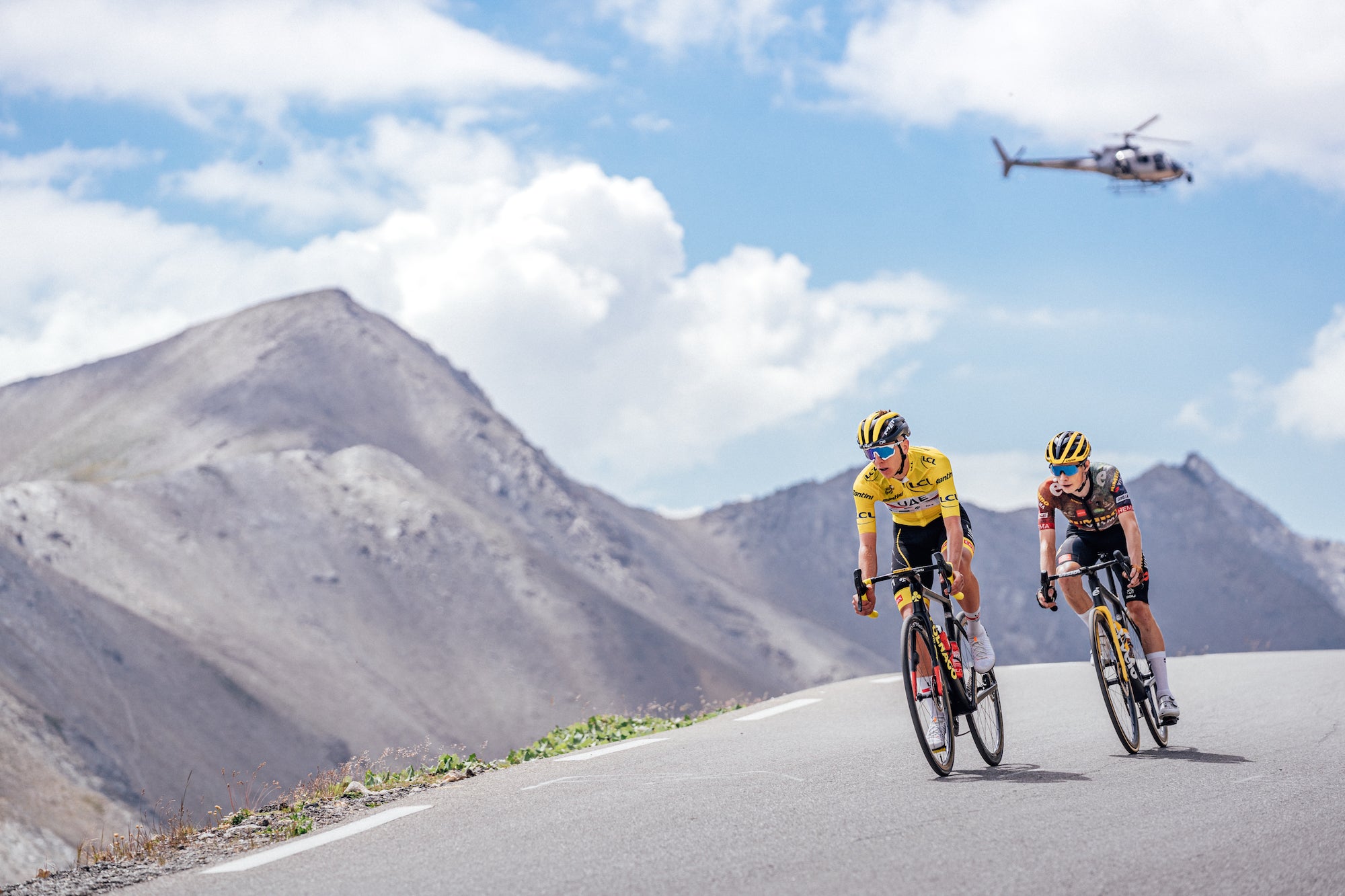The climbs of the Tour de France are inscribed in cycling’s mythology. Over the decades, the mountains have played host to some of the sport’s most memorable moments, with the race often won and lost on their slopes. From the Alpine passes to the slight bumps in the road, each ascent is assigned a category that denotes its difficulty: fourth, third, second, first, and for the toughest of them all, hors catégorie (HC) – quite literally unclassifiable.
For aspirants to the King of the Mountains throne, the climbs are a hunting ground. Each ascent is ranked in order to allocate points to those vying for the polka dot jersey. Be the first over a fourth category climb and you’ll claim a single point. But beat your rivals to the summit of an HC mountain and you’ll add 20 points to your tally, double if the climb marks the stage finish.
Legend has it that the classifications were originally decided with a Citroën 2CV car, with the climb’s category judged to be the same as the gear necessary to motor up it. For Thierry Gouvenou, the Tour’s race director and the person responsible for designing the race route, that’s all nonsense.
“Perhaps the story came from a drunken night between journalists,” Gouvenou tells Rouleur. “In cycling we have so many stories like that that have been embellished over time. Maybe there’s some truth in it somewhere, but I’m not convinced.”
The formula
When it comes to classifying climbs, Gouvenou and his team at ASO rely on a simple mathematical formula. “Essentially, if we have a climb that isn’t so well known, we multiply the distance by the average gradient squared,” he says. “That gives us a number which then gives us a score.”
Let’s take, for example, Alpe d’Huez. With its 21 hairpins, the mountain stretches out 13.8km in length, at an average pitch of 8.1%. The sum therefore is 13.8 x (8.1 x 8.1), giving a score of 905.
Gouvenou and his team found that the following scores correspond to the long-established categories:
600+ points – hors catégorie
300-600 points – 1st category
150-300 points – 2nd category
75-150 points – 3rd category
Up to 75 points – 4th category
“I applied this [formula] to the Tour de France and went back over all the climbs about 15 years ago,” says Gouvenou. “As it turned out, most of what had been done over the years fit within this framework. There are exceptions of course, but for the most part, it matched up.”
 The Alpe d'Huez is a HC categorised climb (Zac Williams/SWPix.com)
The Alpe d'Huez is a HC categorised climb (Zac Williams/SWPix.com)
When faced with a new ascent, Gouvenou and a handful of fellow former professional cyclists travel out to the climb to make an assessment with their own eyes. This is what happened in 2019, when the team headed to the Alps to see the newly paved Col de la Loze, which was set to make its Tour debut the following year.
Read more: The toughest climbs of the 2023 Tour de France
“When we did the recon [of the Col de la Loze] in the car, we realised we had something exceptional in front of us,” Gouvenou says. Using his formula, the race director punched the numbers into his calculator and found that the climb scored a jaw-dropping 1,300 points, more than twice the amount required for HC classification.
Today, the Col de la Loze stands as one of the highest ranking mountains the peloton has ever tackled, alongside the Col du Portet, Mont Ventoux, the Col de la Madeleine, and the Plateau de Beille.
Other factors to consider
It’s not all about mathematics, though. For climbs that aren’t as clear-cut as these towering peaks, Gouvenou and his team take a host of other details into account. One factor that helps them decide is the ascent’s placement within a stage. “The closer the climb is to the finish line, the greater the chance it will be bumped up a category,” says Gouvenou. “This doesn’t tend to happen with the big climbs, though. It’s mostly for the lesser-known ones.”
History plays a part, too. In fact, for Gouvenou, this is where the “subjective side” of climb classification really comes into play. “Climbs where there have been great battles, big cycling moments. That helps us to rank them.”
The iconic Col du Galibier is one such climb. First introduced to the Tour de France in 1911, the Galibier has two ascents, both of which were tackled in the 2022 Tour. On stage 11, the riders climbed the tougher route heading south from Valloire, before taking the easier road up from Briançon in the following stage. Using ASO’s formula, the first ascent scores 843 points, while the second comes in at 598, two points shy of HC classification. Still, given the Galibier’s century-long love affair with the race and its dizzying height of 2,642m, the climb keeps its HC status in both directions.
 The Col du Galibier was climbed twice in the 2022 Tour de France (Zac Williams/SWPix.com)
The Col du Galibier was climbed twice in the 2022 Tour de France (Zac Williams/SWPix.com)
There’s also a lot of consideration given to the smaller foothills. “We sometimes classify climbs as fourth category that don’t really merit it,” says Gouvenou. “That’s a bit what happened in Denmark [with this last year's route].”
Read more: How Thierry Gouvenou designs every kilometre
The 2022 Grand Départ took place in the flatlands of Scandinavia, where the riders rolled over six category four climbs before they entered France for the first time. These short ascents barely met the threshold for classification according to ASO’s formula, but, Gouvenou explained, they were classified to kickstart the polka dot jersey competition in the opening days of the race.
What’s clear is that, despite having a formula to rely on, the old-school approach has not been lost when categorising climbs. “We’re not strictly rigid with the classifications,” says Gouvenou. “The maths is really just to verify.”
*Cover image by Alex Whitehead/SWPix.com































